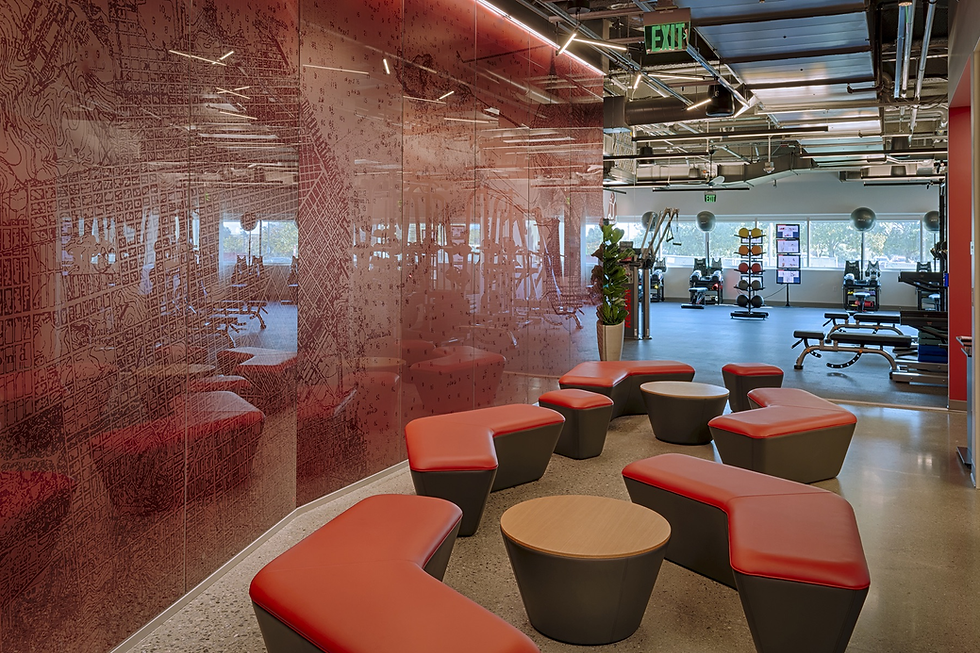Enhancing Flexibility and Functionality: The Role of Modular Furniture in Modern Workspace Design
- Drake+Khan Design

- Apr 29, 2024
- 3 min read
In the ever-evolving landscape of contemporary workplaces, adaptability, and functionality stand as pillars of efficiency and innovation. With the rapid changes in technology, workstyles, and organizational structures, traditional office setups are giving way to more flexible and dynamic environments. Enter modular furniture – a game-changer in modern workspace design.
All Things Modular
© Christina Strand & Niels Hvass / Narbutas / Soft Rock
Modular furniture offers a versatile solution to the challenges posed by fluctuating space requirements and diverse work needs. Its ability to be reconfigured, combined, or expanded makes it an ideal choice for businesses seeking adaptable workspace solutions. Now let's delve into how this furniture enhances adaptability and functionality while exploring real-world examples of its application.
Adaptability through Versatility
One of the primary benefits of flexible furniture is its versatility. It can easily be rearranged, resized, or repurposed to accommodate changing demands within a workspace. Such furniture can seamlessly adapt to these shifts, whether it's a startup experiencing rapid growth or a company transitioning to a remote-friendly model.
For instance, imagine a co-working space where individual workstations can be transformed into collaborative hubs within minutes. Desks with interchangeable components allow users to configure their workspace according to their preferences, promoting productivity and creativity; and ultimately fostering a dynamic environment conducive to innovation and collaboration.
Functionality Redefined
Beyond adaptability, adjustable furniture redefines functionality in the workplace. Traditional office setups often struggle to optimize space usage efficiently. In contrast, moveable pieces are designed with functionality, offering multipurpose solutions that maximize every square foot of the workspace.
For instance, modular seating systems can serve as standalone chairs, combine to form sofas, or even transform into impromptu meeting areas with the addition of built-in tables. This multifunctionality not only saves space but also promotes interaction and teamwork among employees. Additionally, flexible storage solutions help declutter the workspace, providing customizable options to organize belongings and documents effectively.
Real-World Applications
© Google Mountain View, California Campus / BIG / Heatherwick Studio / Studios Architecture
Numerous organizations have embraced this concept to create flexible and functional work environments. One such example is Google's campus in Mountain View, California. Google's office spaces feature modular workstations and lounge areas that can be easily reconfigured to accommodate various team sizes and activities. This flexibility aligns with Google's innovative culture, allowing employees to collaborate seamlessly while adapting to evolving project requirements.
Similarly, Steelcase, a leading provider of workplace solutions, has introduced furniture collections such as "B-Free" and "Mackinac," designed to promote agility and collaboration. These collections offer a range of desks, seating, and storage options, empowering organizations to customize their workspace according to their unique needs.
Conclusion
In the dynamic landscape of modern work environments, the role of modular furniture cannot be overstated. Its ability to enhance adaptability and functionality makes it a valuable asset for businesses striving to stay agile and competitive. By investing in modular solutions, organizations can create versatile workspaces that foster creativity, collaboration, and productivity.
As we look to the future of work, the versatility and flexibility offered by modular furniture will continue to shape the way we design and utilize office spaces. Embracing this trend enables businesses to stay ahead of the curve, catering to the evolving needs of employees and enhancing overall workplace satisfaction and performance.










Comments